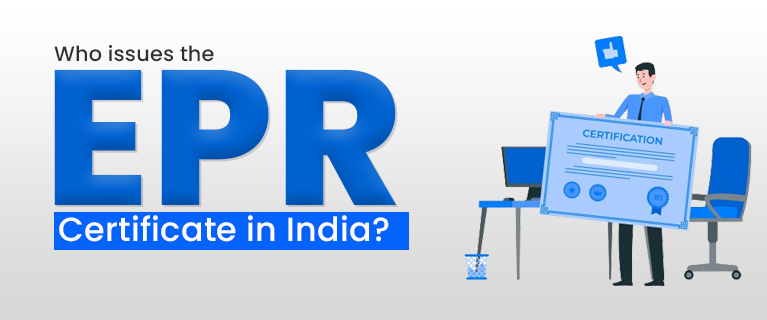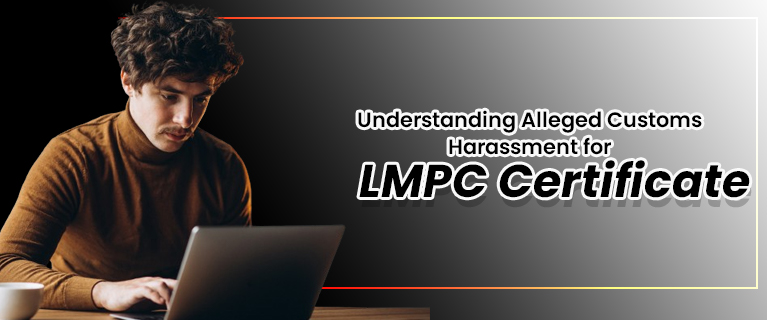How to Check The LMPC Certificate Application Status?
In the dynamic world of commerce, where precision and compliance are paramount, businesses often find themselves navigating the intricate process of obtaining the Legal Metrology Packaged Commodities (LMPC) certificate. This crucial certification ensures that packaged goods meet standardized legal and metrological requirements, instilling confidence in both consumers and regulatory bodies.
One aspect that often adds an extra layer of complexity to this certification journey is keeping track of the LMPC certificate application status. Understanding the status of your application is akin to holding a compass in the vast sea of regulatory processes, providing clarity and direction. Here's a closer look at why monitoring the application status is key and how businesses can streamline this aspect of their compliance journey.
The Significance of LMPC Certification:
LMPC certification, or Legal Metrology and Packaged Commodities certification, holds paramount importance for businesses. Here's a detailed breakdown of its significance:
1. Regulatory Compliance:
LMPC certification is a legal requirement in many jurisdictions. It ensures that businesses comply with established regulations related to weights, measures, and packaging of goods. Non-compliance can lead to legal consequences, including fines and product recalls, which can significantly impact a company's reputation and financial standing.
Read Also This – Decoding The LMPC Certificate for Customs2. Quality Assurance:
The LMPC certification process involves rigorous checks on the accuracy of weights and measures, guaranteeing that packaged goods meet specific quality standards. This quality assurance aspect is vital in industries where precise measurements are crucial, such as pharmaceuticals, food, and chemicals.
3. Consumer Confidence:
LMPC certification serves as a visible symbol of a business's commitment to quality. Consumers are more likely to trust and choose products with this certification, knowing that the items comply with legal standards. It builds confidence in the minds of consumers, establishing a positive association with the brand.
4. Avoidance of Fraud:
The LMPC certification process helps prevent fraudulent practices related to the quantity or content of packaged goods. This is particularly important in sectors where there's a risk of misrepresentation or deceptive packaging.
5. Global Market Access:
For businesses engaged in international trade, LMPC certification facilitates market access by demonstrating adherence to global standards. It can be a prerequisite for exporting goods to certain countries.
6. Marketing Advantage:
Businesses can use LMPC certification as a marketing tool, showcasing their commitment to quality and legal compliance. This can differentiate their products in a competitive market, attracting conscientious consumers.
7. Supply Chain Efficiency:
Standardized measurements and packaging contribute to a more efficient supply chain. It reduces errors in inventory management and logistics, streamlining the movement of goods from production to distribution.
8. Legal Protection:
LMPC certification provides legal protection to businesses by ensuring that their packaging and labelling practices align with established norms. This safeguards them against potential legal disputes and liabilities.
In summary, LMPC certification goes beyond being a mere formality. It's a multifaceted tool that not only ensures legal compliance but also enhances product quality, fosters consumer trust, and opens doors to global markets. Businesses that prioritize LMPC certification position themselves as reliable and responsible contributors to the marketplace.
Navigating the LMPC Application Process:
1. Documentation Submission:
Businesses initiate the LMPC certification process by submitting a comprehensive set of documents to the relevant regulatory authorities. These documents typically include details about the products, manufacturing processes, packaging materials, and compliance with legal standards.
2. Application Processing:
Regulatory authorities carefully review the submitted documents to ensure they comply with the specified standards and regulations. This phase involves a thorough examination of the business's practices and adherence to legal metrology requirements.
3. Inspection and Verification:
In many cases, the regulatory body may conduct on-site inspections to verify the accuracy of the information provided. Inspectors may assess manufacturing facilities, inspect packaging processes, and check the accuracy of measuring instruments.
Read Also This – Introduction To LMPC Certificate For Imports4. Testing Procedures:
Depending on the nature of the products, regulatory bodies may conduct testing procedures to verify the accuracy of weights and measures. This is especially crucial in industries where precise measurements are paramount, such as in the pharmaceutical or food sectors.
5. Correction and Clarification:
During the review process, if discrepancies or issues are identified, businesses may be asked to provide additional information or make necessary corrections to align with regulatory requirements. Clear communication and prompt response to requests are essential during this phase.
6. Approval or Rejection:
Once the regulatory body is satisfied with the submitted documents, inspections, and any necessary corrections, they make a decision regarding the application. This can result in either the approval of the LMPC certification or, if the criteria are not met, rejection.
7. Issuance of Certification:
In the case of approval, the regulatory authorities issue the LMPC certification. This certification typically includes details such as the authorized use of measuring instruments, permissible tolerances, and other relevant information.
8. Ongoing Compliance Monitoring:
Even after certification is granted, businesses are subject to ongoing monitoring to ensure continued compliance with established standards. This may involve periodic inspections or the submission of regular reports to maintain certification validity.
9. Status Updates for Applicants:
Throughout the process, businesses can inquire about the status of their application. Regulatory authorities may provide updates on whether the application is under review, if any additional information is required, or when a decision is expected.
10. Communication Channels:
Businesses should establish effective communication channels with the regulatory authorities. This helps in receiving timely updates, addressing queries, and expediting the certification process.
In conclusion, the journey to LMPC certification involves a meticulous and collaborative effort between businesses and regulatory authorities. It encompasses document submission, inspections, testing, and ongoing compliance, with regular status updates providing transparency and assurance to the businesses seeking certification.
Streamlining the Monitoring Process:
1. Digital Platforms:
Regulatory bodies increasingly leverage digital platforms to streamline processes. Online portals offer businesses a centralized hub for monitoring the status of their LMPC certification applications. These platforms provide real-time updates, allowing businesses to track progress at various stages of the application review. Features such as application tracking, document submission, and messaging systems within these platforms enhance transparency. Businesses can access pertinent information swiftly, reducing the need for time-consuming manual inquiries.
2. Communication Channels:
Establishing effective communication channels with regulatory authorities is crucial. This involves creating a two-way avenue for information exchange. Clear lines of communication allow businesses to inquire about the status of their applications, seek clarifications, or provide any additional requested information.
Regular communication fosters a proactive approach, enabling businesses to stay ahead of potential issues. It also demonstrates commitment and cooperation, factors that regulatory bodies often appreciate during the certification process.
3. Expert Guidance:
Navigating the regulatory landscape can be intricate, and seeking expert guidance can be a wise investment. Professionals familiar with legal metrology and certification processes can provide valuable insights and assistance throughout the application journey.
These experts offer guidance on compiling and submitting the necessary documentation, understanding specific regulatory requirements, and addressing potential challenges. Their experience can help businesses navigate the complexities efficiently, potentially expediting the LMPC certification process.
Read Also This – What Is Procedure, Validity & Renewal For Seeking LMPC Certificate For ImportIn summary, streamlining the monitoring process of Legal Metrology and Packaged Commodities certification involves leveraging digital platforms for real-time updates, establishing effective communication channels with regulatory authorities, and seeking expert guidance to navigate the intricacies of the application journey. These measures collectively enhance transparency, efficiency, and the overall success of obtaining and maintaining the LMPC certification.
In the intricate dance of commerce, where regulations set the rhythm, understanding and monitoring the LMPC certificate application status is a strategic move. It's not merely a bureaucratic step; it's a proactive measure that positions businesses for success in the competitive market. By staying informed and agile in the face of regulatory processes, businesses can not only achieve compliance but also carve a path towards sustained growth and consumer trust.
Conclusion:
The meticulous submission of documents initiates this dance, syncing businesses with legal standards. As the application progresses, the state of anticipation underscores the importance of tracking progress. It's a delicate choreography involving inspections, verifications, and potential corrections. Businesses engaging in this dance recognize that the LMPC certification is not just a regulatory requirement—it's a shield against legal repercussions and a beacon signalling commitment to quality.










